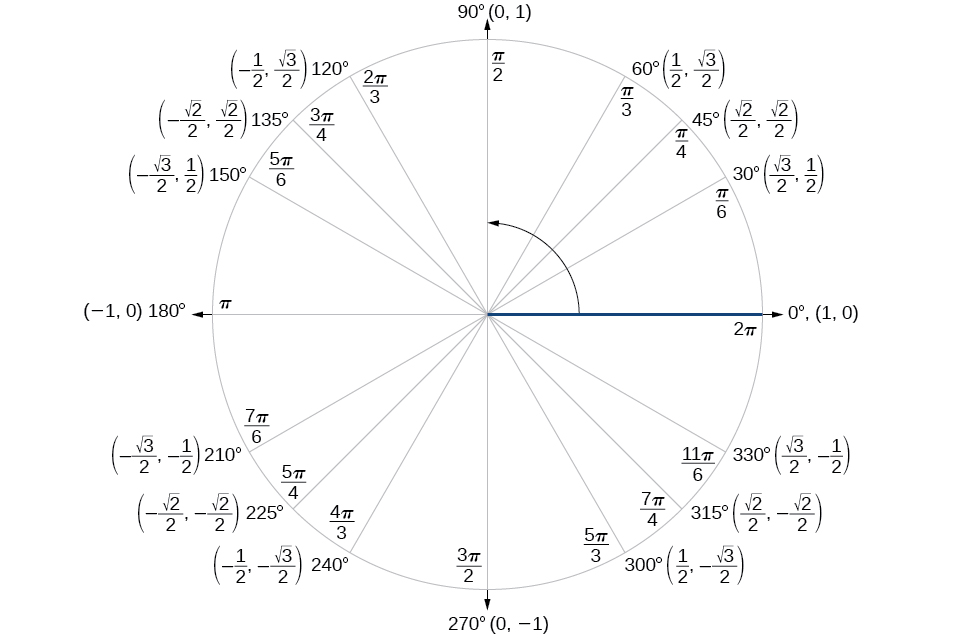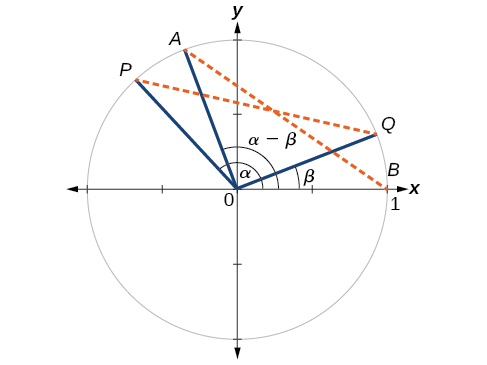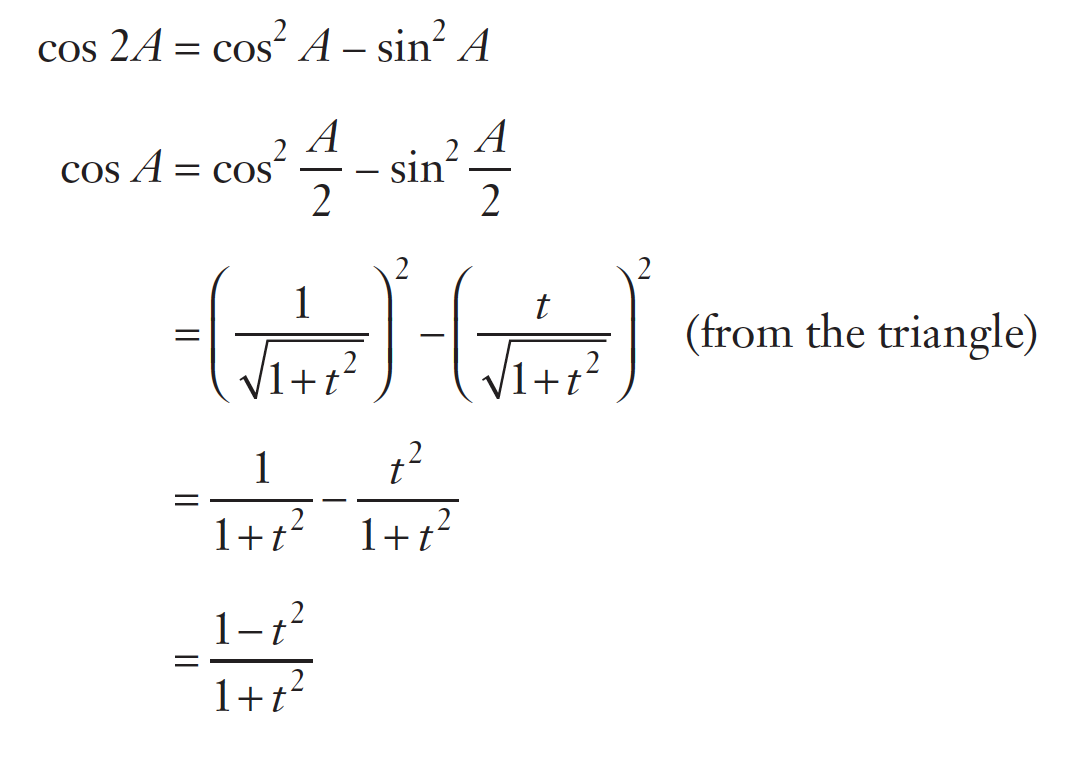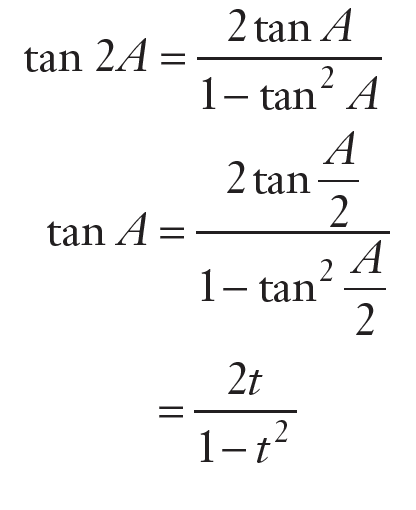Mathematics Extension 1: Trigonometry
Table of Contents
Unit Circle
- From advanced mathematics, you may remember the unit circle 1. This will be important for this module.

Sum-Difference Identities
Cosine
If you aren’t familiar with
- If the
- If the
Proof for cosine sum-difference identity
- Consider 2 points (
- Point
- Point
- Point
- In this triangle,
If this hard to visualise, a diagram is coming.
- Let’s make another triangle:
- Point
- Point
- Point
- If you’ve drawn out the 2 triangles, you will have noticed that

If you don’t remember the Cartesian distance formula, here it is:
- Now, we can find the distance from
Sine
Proof for sine sum-difference identity
- Substitute
Tangent
Proof for tangent sum-difference identity
Honestly I’m not bothered to do it. I’ll probably get carpal tunnel syndrome from all these escape characters.
To prove it yourself, just use
sub in the and identities, and simplify. It’s not that hard, its just tedious 😕.
Double Angle Identities
Sine
Proof
Cosine
Proof
Tangent
Proof
Product Identities
- These are just the sum-difference identities, rearranged to find the products of the ratios.
This means I don’t have to do proofs! Yay!
Cosine-Cosine
Sine-Sine
Sine-Cosine
Cosine-Sine
T-Formulae
I’m not even bothered to type proofs anymore. Y’all can deal with screenshots.
Inverse Trigonometric Functions
Notation
Inverse trigonometric functions are notated in one of 2 ways:
- The “arc” prefix:
- The inverse
The value of the inverse of an inverse trigonometric function is the original value.
For example:
This is true for all inverse trigonometric functions.
Properties
And we’re done!
That’s all of Extension 1 Trigonometry (for year 11, anyway).
References
Abramson, J. (2015, October 31). 7.3: Sum and Difference Identities - Mathematics LibreTexts. Mathematics LibreTexts; OpenStax CNX. https://math.libretexts.org/Bookshelves/Precalculus/Book%3A_Precalculus_(OpenStax)/07%3A_Trigonometric_Identities_and_Equations/7.03%3A_Sum_and_Difference_Identities ↩︎


